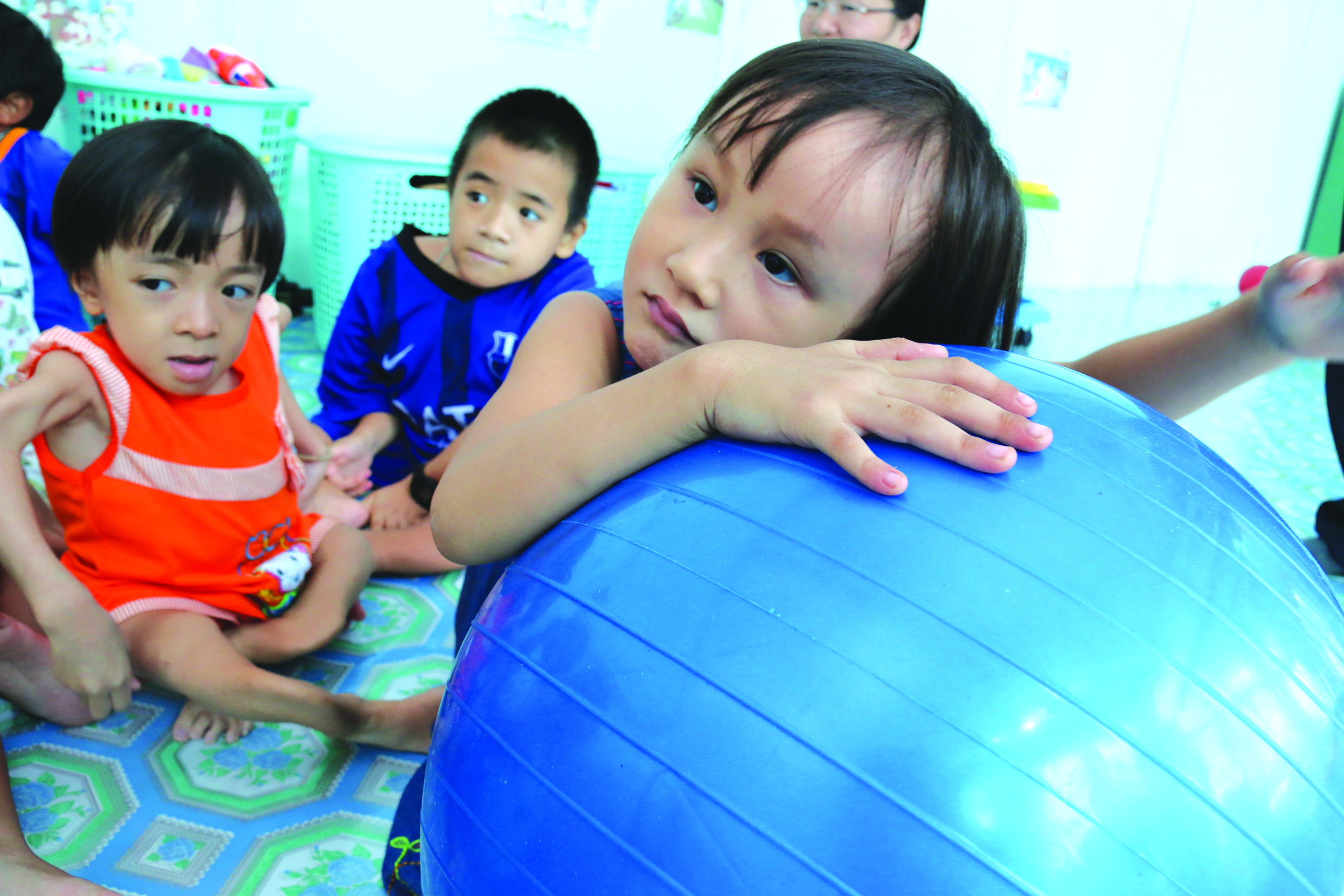A number of Vietnamese child patients of brittle bone disease have benefited immensely from an innovative treatment based on crocodile bone paste, which brings them and their families hopes of a healthier, fulfilling life.
Osteogenesis imperfecta (OI), also known as brittle bone disease, or “Lobstein syndrome”, is a congenital bone disorder characterized by brittle bones which are exceptionally prone to fracture, according to Wikipedia.
People suffering from OI were born with defective connective tissue, or without the ability to make it, usually due to a deficiency of Type-I collagen.
The incidence of OI is estimated to be one per 20,000 live births.
There is currently no cure for OI.
However, an innovative treatment under a program called “Kim Cuong Tuoi Dep” (Nice Diamonds), which combines medication, nutrition, therapy and joyful lifestyle, is opening a new horizon for the child patients of the disease.
The program, which was launched four years ago, is closely monitored by the Ho Chi Minh City Traditional Medicine Institute.
The program is based on the idea of Ton That Hung, director of HCMC Hoa Ca Crocodile Village in District 12, who thought his collagen-packed crocodile bone paste may be of some help to OI child patients.
After four years, the treatment course has been a success.
The OI child patients, who are sent for treatment at the village, can now perform activities which they could only dream of, including standing, walking, swimming and practicing yoga.
Among the kids are Minh Thanh and Minh Thu, 10, a pair of twin sisters with OI.
The little girls, who live with their family in the southern province of Binh Duong, have each suffered almost 40 bone fractures during the years.
Thanh and Thu had their first bone fractures when they were only nine and 21 days old.
Kim Thi Huong Thao, and her husband fought back their tears seeing their little girls continually in plaster cast from hips to ankles or from chest downward.
“We generally spent half a month in hospital. Our two girls took turns having their bones broken,” Thao sadly shared.
Two years ago, Thanh and Thu began their treatment under the “Kim Cuong Tuoi Dep” program.
The two girls can now walk, though awkwardly, on their feeble legs, which are riddled with scars from previous operations to have inoxidised bars inserted to boost their overall bone strength. “We’re positive that the cure for OI is within our reach, though the result may vary according to each patient’s conditions,” said Dr. Tran Van Nam, vice head of the HCMC Traditional Medicine Institute.
A number of specialists from developed countries have visited the village and expressed their astonishment at the remarkable progress the program has achieved so far, he added.


















































